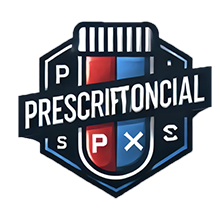Poker is a game of strategy and skill that relies heavily on understanding the value of different hands. In an intriguing intersection, one can draw parallels between poker hands and concepts in physical therapy, particularly when considering strategic decision-making and rehabilitation processes.
Understanding Poker Hands
In poker, players use a combination of cards to form hands, which are ranked based on established hierarchies. The strength of a hand can significantly influence a player’s strategy, affecting how they manage their bets and confront their opponents. The typical rankings of poker hands, from highest to lowest, include:
- Royal Flush
- Straight Flush
- Four of a Kind
- Full House
- Flush
- Straight
- Three of a Kind
- Two Pair
- One Pair
- High Card
The Strategic Component
Just as poker players must evaluate their hands and decide on their next moves based on risk and opportunity, physical therapists engage in similar strategic assessments when designing rehabilitation protocols for their patients. Understanding the anatomy of an injury or condition is akin to knowing the different poker hands: both require a systematic approach to achieve the best outcomes.
How Poker Hands Apply to Physical Therapy
In physical therapy, professionals assess the “hand” they are dealt through patient evaluations. These assessments can be compared to evaluating poker hands. Let’s explore how this analogy plays out:
Hand Strength in Patient Assessment
In poker, a strong hand can dictate aggressive betting, while a weak hand may require a more conservative approach. Similarly, a physical therapist may assess a patient’s condition through strength tests, range of motion assessments, and pain level evaluations. A patient presenting with a strong assessment may be encouraged to take more dynamic steps in their rehabilitation, while those with weaker assessments might need a more cautious approach.
Risk Management
Players in poker must be aware of their stack and the potential risks of various plays. In physical therapy, therapists continuously monitor patients’ progress and adjust their treatment plans. This involves weighing the risks of pushing a patient too hard against the benefits of enhancing mobility or strength.
Teamwork and Communication
Just as a poker player must often bluff or communicate with their opponents non-verbally, physical therapists must establish clear communication with their patients. Understanding how to express discomfort and progress is critical. The collaborative nature of therapy mirrors the teamwork seen in poker when players engage in discussions about game strategies.
Q&A Section
Q: How do physical therapists evaluate a patient’s condition like poker players evaluate their hands?
A: Physical therapists conduct comprehensive evaluations that assess strength, flexibility, and pain levels, similar to how a poker player assesses their hand strength to make informed decisions during the game.
Q: Can the strategies used in poker apply to physical therapy?
A: Yes, both fields demand strategic thinking, risk assessment, and adapting to changing circumstances. Therapists must continuously adjust treatment plans based on patient feedback and progress, akin to altering strategies based on the evolving dynamics of a poker game.
Q: What parallels can be drawn between poker betting and setting rehabilitation goals?
A: Both involve assessing the current situation and determining the best course of action to maximize outcomes while minimizing risks. In rehabilitation, setting achievable goals can motivate patients, just as a solid bet can increase a player’s chances of winning.
Conclusion
Understanding how poker hands work can provide valuable insights into the strategic decision-making processes in physical therapy. By recognizing the parallels between evaluating hands in poker and assessing patients in therapy, both fields can benefit from a deeper appreciation of strategy, risk management, and effective communication. Ultimately, both poker players and physical therapists strive for success through careful planning and analysis.
